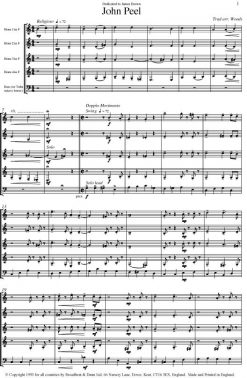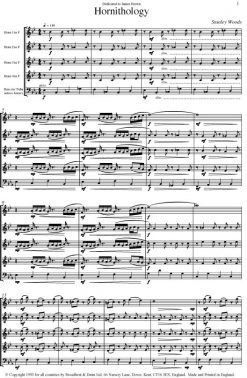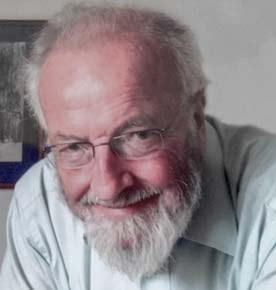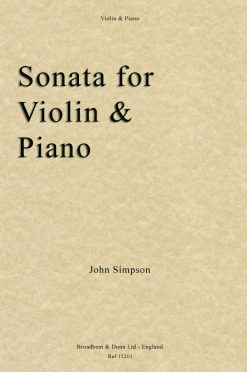£22.95
This Sonata for Violin and Piano reflects the essence of John Simpson's music. It belongs to one of the most fulfilled periods of the composers life when he was experiencing both the excitement of travelling the world as a music examiner as well as the intense happiness of being a grandparent. As such this is possibly the composers most radiant work, with a slow movement that he would most like to be remember by.
The opening movement of this work, the most extended of the four, contrasts a wistful almost elegiac section with one that is fast and dance-like. There is an extended slow passage at the end that seems to be searching for resolutions not provided until later. The second movement, a scherzo, is passionate rather than playful: it is the most joyous of the four, indicative perhaps of the elation that it is possible to feel when finding the means of being able to express ideas in a way that the composer hardly thought possible. The slow third movement, a lyrical cantilena with the violin always to the fore, is the emotional core of the work, and leads without a break into the quick dance-like finale. After modulating through a variety of keys this reaches a climax in an ecstatic waltz-time transformation of the opening of the work in the home key of D major. However, rather than ending loudly, the music drifts ever more quietly into the distance without ever slowing down, like a procession fading into memory.
 Traditional - John Peel (Horn Quartet with Double Bass or Tuba and optional Drums) - Parts Digital Download
1 × £9.95
Traditional - John Peel (Horn Quartet with Double Bass or Tuba and optional Drums) - Parts Digital Download
1 × £9.95 Stanley Woods - Hornithology (Horn Quartet with Double Bass or Tuba) - Parts Digital Download
1 × £8.95
Stanley Woods - Hornithology (Horn Quartet with Double Bass or Tuba) - Parts Digital Download
1 × £8.95 John Simpson - Sonata for Violin and Piano - Digital Download
1 × £22.95
John Simpson - Sonata for Violin and Piano - Digital Download
1 × £22.95

